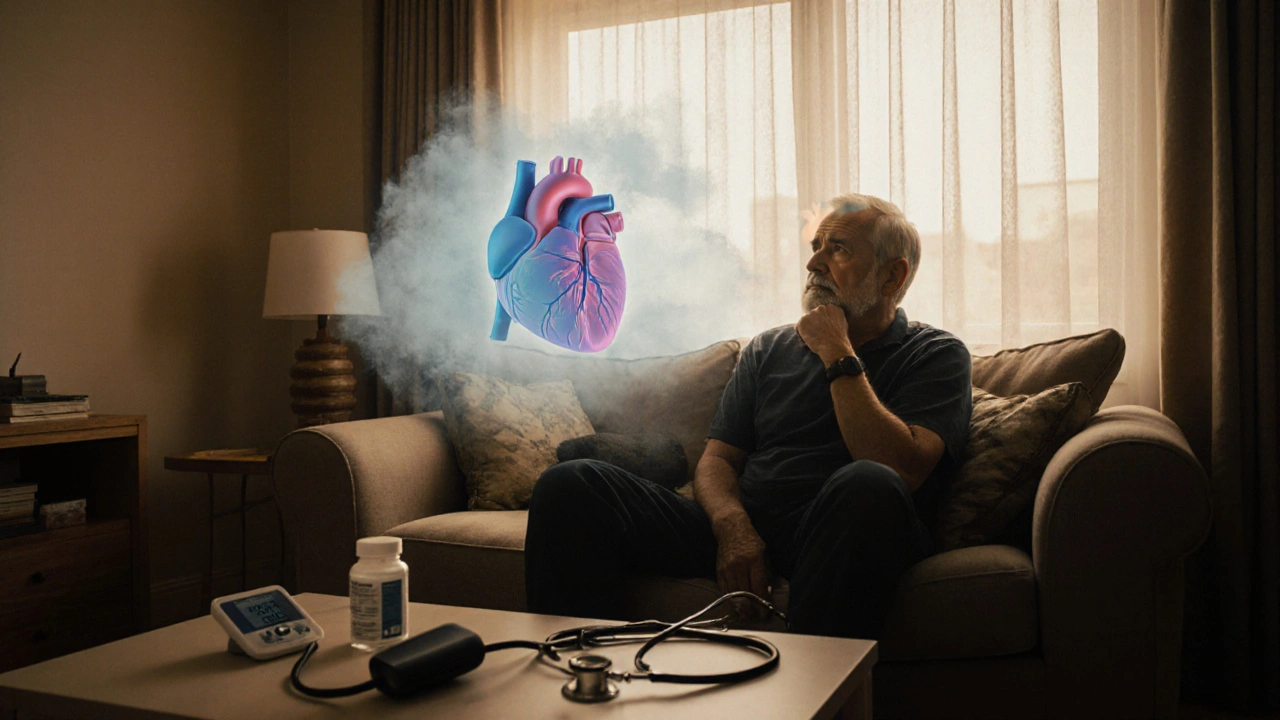Cardiac Depression: What It Is and How to Manage It
When your heart can’t pump enough blood, you’re dealing with cardiac depression. It’s a medical way of saying the heart’s output is below normal, which can leave you feeling tired, short‑of‑breath, or just off‑balance. Understanding why it happens and what you can do about it makes the whole situation less scary.
What Causes Cardiac Depression?
Most often, cardiac depression shows up after a heart attack, prolonged high blood pressure, or a valve problem that forces the heart to work harder than it should. These conditions weaken the muscle, so each beat moves less blood. Other culprits include chronic lung disease, severe anemia, and even certain medications that slow the heart down.
Risk factors are the same ones that raise your chance of any heart trouble: smoking, a sedentary lifestyle, poor diet, and a family history of heart disease. If you’ve had any of those, keep an eye on your energy levels and talk to a doctor if you notice a change.
Spotting the Symptoms
Cardiac depression doesn’t always announce itself loudly. Common signs are:
- Unexplained fatigue that doesn’t improve with rest.
- Shortness of breath during everyday activities, like climbing stairs.
- Swelling in the ankles or feet.
- A rapid or irregular heartbeat.
- Feeling dizzy or light‑headed, especially when standing up quickly.
How Doctors Diagnose It
The first step is a physical exam and a chat about your symptoms. Doctors will usually order an echocardiogram – an ultrasound that shows how well your heart is pumping. Blood tests can reveal if you have anemia or thyroid issues that might be dragging your heart down. In some cases, a stress test is used to see how the heart reacts to activity.
Treatment Options You Can Expect
Treatment targets two goals: improve the heart’s ability to pump and relieve the symptoms that bother you. Common approaches include:
- Medications: ACE inhibitors, beta‑blockers, and diuretics are often prescribed to lower blood pressure, reduce fluid buildup, and help the heart beat more efficiently.
- Lifestyle changes: Cutting back on salt, eating more fruits and veggies, and adding gentle exercise (like walking) can boost heart function over time.
- Cardiac rehabilitation: Supervised programs teach you safe ways to increase activity while monitoring your heart.
- Device therapy: In severe cases, a pacemaker or implantable cardioverter‑defibrillator may be recommended to keep the rhythm steady.
It’s important to follow up regularly with your healthcare team. Adjusting medication doses or adding new therapies often depends on how you feel and what follow‑up tests show.
Practical Tips for Daily Life
Living with cardiac depression doesn’t mean you have to quit everything you enjoy. Here are a few easy habits that help:
- Track your weight daily; a sudden jump can signal fluid retention.
- Take short, frequent walks instead of one long session if you get winded quickly.
- Keep a low‑sodium pantry – swapping processed foods for fresh ingredients cuts hidden salt.
- Stay hydrated, but follow your doctor’s advice on how much fluid is safe.
- Don’t skip your meds, even on days you feel fine. Consistency is key.
Remember, cardiac depression is manageable. With the right mix of medical care, lifestyle tweaks, and regular monitoring, you can keep your heart working better and feel more like yourself again.
If you think you might have symptoms, schedule a check‑up. Early action is the best way to protect your heart and your quality of life.
How Chronic Heart Failure and Depression Influence Each Other
Explore the two‑way relationship between chronic heart failure and depression, its impact on outcomes, and practical ways to manage both conditions together.
Read more
